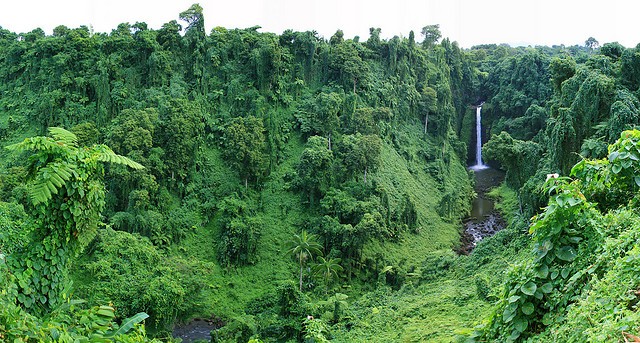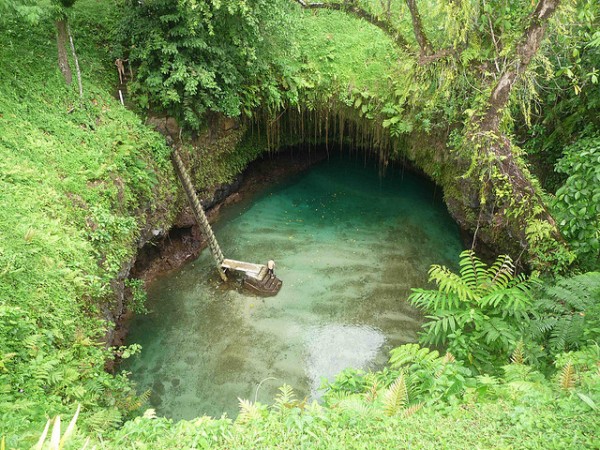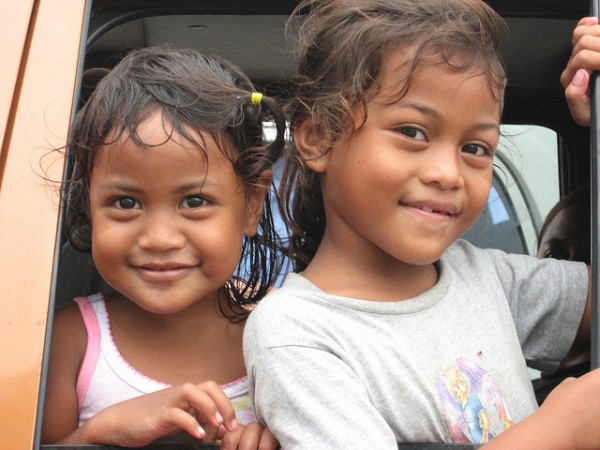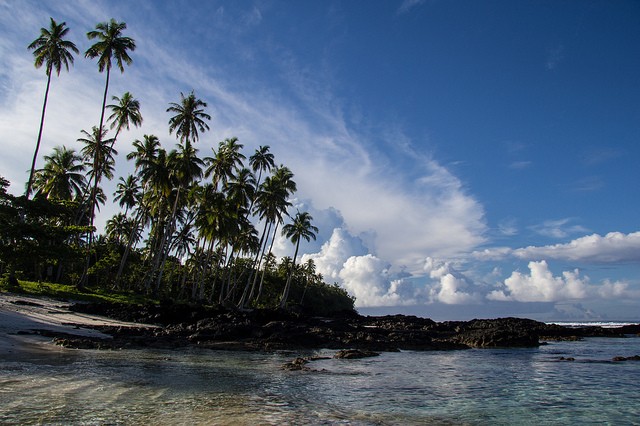 the Travel Enthusiast
the Travel Enthusiast
- 19 May
Adam in Amazing Places | NO COMMENTSThe Polynesian Beauty of Samoa

Sopo’aga Falls in Samoa. This is the typical and common topography of the country ©NeilsPhotography/flickr
Samoa is an island nation located on the Pacific. The capital and largest city is Apia.
The official and national languages are both Samoan and English. The currency is the Samoan Dollar.
Samoa is split in two main islands(Upolu and Savai’i)
It’s well known for its picturesque and outstanding islands, mountains and beaches. Samoa has much to offer when it comes to natural landscapes. The main tourist attractions of the country are:
- Nu’ulopa is an island that lies between the two main islands of Upolu and Savai’i. It is a large conservation area filled with coconut palms and home to many flying foxes. The beaches are also popular sights for tourists
- Fagaloa Bay has a mountainous forest with exceptional views both of the mountain and from the mountain seeing the entire bay. Many waterfalls, jungles are also composed.
- Mount Matavanu is in fact a volcano. An eruption started in 1905 and ended in 1911 that devastated trees and villages. Today lava fields can be seen even today.
- Aganoa Beach has outstanding examples of coral reefs. The beach is also famous for its surfing culture with good resorts, bars and restaurants.
- Piula Cave Pool is one of Samoa’s most impressive sights. It is a natural freshwater pool that is formed out of a cave, and it is a popular swimming destination for both tourists and locals
Besides the capital city of Apia, other main towns are:
- Vaitele (the population is 7,300)
- Faleasiu (the population is 3,900)
- Vailele (the population comprises of 3,200 people)
- Leauvaa (the population consists about 3,200 people)
- Safotu (the population is 1,500)
The climate of the country is tropical maritime. Trade winds are common on the island, especially from May to November. Like other countries on the Pacific, Samoa is also prone to hurricanes and cyclones that causes severe damages. The hot yet rainy times are between December and April.
The topography is one of a kind. Samoa has many islands and most of them, if not all of them are formed by volcanic rocks. Despite that, none of the volcanoes are active. The highest peak is Mount Silisili which is 1,900 meters high. The mountain lies on Savai’i island. Numerous rivers and lakes are also present and the whole coastline is surrounded by coral reefs. The most common environment issue that the country faces is soil erosion.
The wildlife has rare but unique. It has more than 60 type of lizards, bats and birds.The tooth billed pigeon is one of the best examples but due to the fact that hunting is common on the island, most species are endangered and some even vanished.
The vegetation is rich and dynamic. Vast tropical forests occupy around the 70% of the islands area. Arable land is about 3% of the country. Coconut palms are very popular in Samoa.
The Infrastructure and transportation in the country is mixed. There are totally 2,337 km of roads but most of them are rural roads and only 14% of them are paved. Faleolo International Airport is the only airport on the island which lies 40 km from Apia. There are also services between the two main islands.
Even if it has an international airport, Samoa is still a remote island and it is too small for commercial flights. Its flag carrier fly only to a few international destinations (mainly New Zealand and Hawaii).
The political status of the country is republic. The legislature is made by the Parliament of Samoa.
The economy of the country is vulnerable. Because so many Samoans emigrate to countries like New Zealand, Australia and the United States, the economy is decreasing. It primarily focuses on subsistence agriculture, exporting products like coconuts but even the agriculture slowly diminishes because of the natural disasters like cyclones. However, during the 1990’s it started to grow back. Tourism, fishery and industry started to flourish, fishing products being the major export alongside fruits.
- Flights
- Hotels
- Packages
- Cars
- Cruises
travel search by Travelgrove (get this widget)The population is 200.000 of people, 20% living in urban areas. Mass emigration occurred, especially to New Zealand. Around 140.000 people of Samoan origin live there, half of them being born in New Zealand and owning the countries citizenship.
Polynesian people mostly fill the island with a small minority of European, Asian and other Pacific origins.
In spite of Samoa being a highly secular state that grants and protects religious freedom, 98% of them are Christians with the rest of 2% being different others( Islam, Judaism, Hindu and others)
The Health care system is going well, having a status of a developed country. Most people are taking medical training is undertaken in Australia, Fiji and New Zealand.
Immigration and custom are safe and strict. Visas are required for all foreign travelers.
Traveling within the country is fast and easy because of the countries size. Like most commonwealth member countries, the traffic is on the left side.
Ferries occur daily between the islands. Buses are widespread although there are no timetables. Taxis are also present throughout the country but fares must be agreed before taking a cab.
The Brief History of Samoa
There is an archaeological evidence that the country was inhabited already in 1000 BCE by Austronesian people and also that country maintained contacts and good relationships with other Pacific islands( especially Tonga and Fiji) for centuries. Europeans started to be aware about Samoa’s existence in the 18th century but it was not until the 19th century when they arrived for the first time in the 19th.
The United States, Germany and Britain all had interest on the island. A conference was summoned in 1889 that took in Berlin. It focused on giving total independence for Samoan under American, British and German supervision.
The United Kingdom ceased its interest on the Samoa and gave it to Germany. New Zealand occupied Samoa in 1914 during World War I and from 1919 Samoa was part of the country, receiving a mandate that had the right to administer the islands. Throughout the next decades, Samoans peacefully resisted New Zealand’s rule, particularly between 1926 to 1936, that also resulted the Mau uprising.
After World War II Samoa became a “trust territory” by the United Nations and New Zealand slowly but surely started granting freedom for them.
During the 1940’s and 1950’s a constitution was erected that aimed traditional lifestyle with modern politics, but it was adopted only in 1960. At a referendum that was held by the United Nations in 1961, Samoa voted for independence and the country finally gained independence from New Zealand in 1962 but also there was signed a treaty of friendship between the two nations. In 1970 it joined the Commonwealth of Nations.



